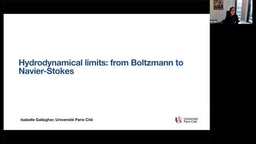With H5N1 avian influenza gradually making its way across the world, a lot of people are preparing for the worst. It’s still not clear if this strain of the flu will ‘evolve the ability to spread between people,’ but if this happens, we’re in for some serious problems:
Supplies of vaccines and antiviral drugs – the two most important medical interventions for reducing illness and deaths during a pandemic – will be inadequate in all countries at the start of a pandemic and for many months thereafter … WHO has used a relatively conservative estimate – from 2 million to 7.4 million deaths – because it provides a useful and plausible planning target. This estimate is based on the comparatively mild 1957 pandemic. Estimates based on a more virulent virus, closer to the one seen in 1918, have been made and are much higher.
The current syntheses of oseltamivir (a.k.a. Tamiflu) fall ‘short of the ideal for several reasons: (1) the starting point in the synthesis is either (-)-shikimic or (-)-quinic acid, which are complex relatively expensive and of limited availability, and (2) two steps involve potentially hazardous and explosive azide-containing intermediates.’
But two new syntheses of oseltamivir/Tamiflu were reported in JACS earlier this week: one is by Yeung et al. and the other is by Fukuta et al.
Although the synthesis from Corey’s group is much shorter, both syntheses avoid using either (-)-shikimic or (-)-quinic acid as starting materials: Corey’s synthesis starts with 1,3-butadiene and trifluoroethyl acrylate and Shibasaki’s synthesis starts with the asymmetric ring-opening reaction of a meso-aziridine with TMSN3. If these syntheses could be scaled up and optimized further, it might be possible to reduce the cost of oseltamivir/Tamiflu and pharmaceutical companies (or paranoid graduate students) could make plenty of the compound, which could be stockpiled and used if a human pandemic occurs.
The only catch: oseltamivir-resistant virus has already been reported in Vietnam…
Joshua
Joshua Finkelstein (Associate Editor, Nature)





Please sign in or register for FREE
If you are a registered user on Research Communities by Springer Nature, please sign in